Quick Summary
- Acupuncture can ease urinary symptoms linked to BPH without drugs.
- Clinical trials show modest improvements in urine flow and prostate size.
- Sessions are usually 30‑45 minutes, 1‑2 times per week for 8‑12 weeks.
- Side‑effects are rare; most men experience little to no discomfort.
- Works best when combined with regular check‑ups and a healthy lifestyle.
Benign Prostatic Hyperplasia (BPH) affects millions of men over 50, causing a nagging need to pee, weak stream, and night‑time trips to the bathroom. While prescription meds and surgery are common options, many men wonder if a needle‑based therapy could help. This article breaks down what acupuncture does for BPH, the science behind it, and how to get started safely.
What is Benign Prostatic Hyperplasia?
Benign Prostatic Hyperplasia is a non‑cancerous enlargement of the prostate gland that narrows the urethra and disrupts normal urine flow. The condition typically starts in a man’s 40s and becomes more pronounced after 60. The enlarged gland squeezes the urethra, leading to symptoms collectively called lower urinary tract symptoms (LUTS).
How Does Acupuncture Work?
Acupuncture is a therapy from Traditional Chinese Medicine (TCM) that involves inserting thin needles at specific points to balance the body’s energy, or "Qi". Modern research suggests the needles stimulate nerves, release endorphins, and improve blood flow, which can influence organ function.
For BPH, practitioners often target points that regulate the bladder, prostate, and smooth‑muscle tension, such as:
- BL33 - located near the sacral region, linked to prostate health.
- CV4 - a central point that supports urogenital function.
- SP6 - harmonizes fluid metabolism and reduces inflammation.
Scientific Evidence Behind the Benefits
Several small‑scale studies from the past five years have examined acupuncture’s impact on BPH symptoms:
- A 2022 randomized controlled trial in China enrolled 120 men with moderate LUTS. After 12 weeks of twice‑weekly acupuncture, the treatment group saw a 30% drop in International Prostate Symptom Score (IPSS) vs. 12% in the sham‑acupuncture group.
- In a 2023 meta‑analysis of five trials (total n=458), acupuncture reduced post‑void residual volume by an average of 45ml and increased peak urinary flow rate (Qmax) by 2.5ml/s.
- Researchers linked these improvements to lowered levels of dihydrotestosterone (DHT) and reduced prostatic inflammation markers, observed via blood tests before and after treatment.
While the numbers aren’t as dramatic as surgical outcomes, the low risk profile makes acupuncture a compelling adjunct for men who want to delay medication or avoid invasive procedures.
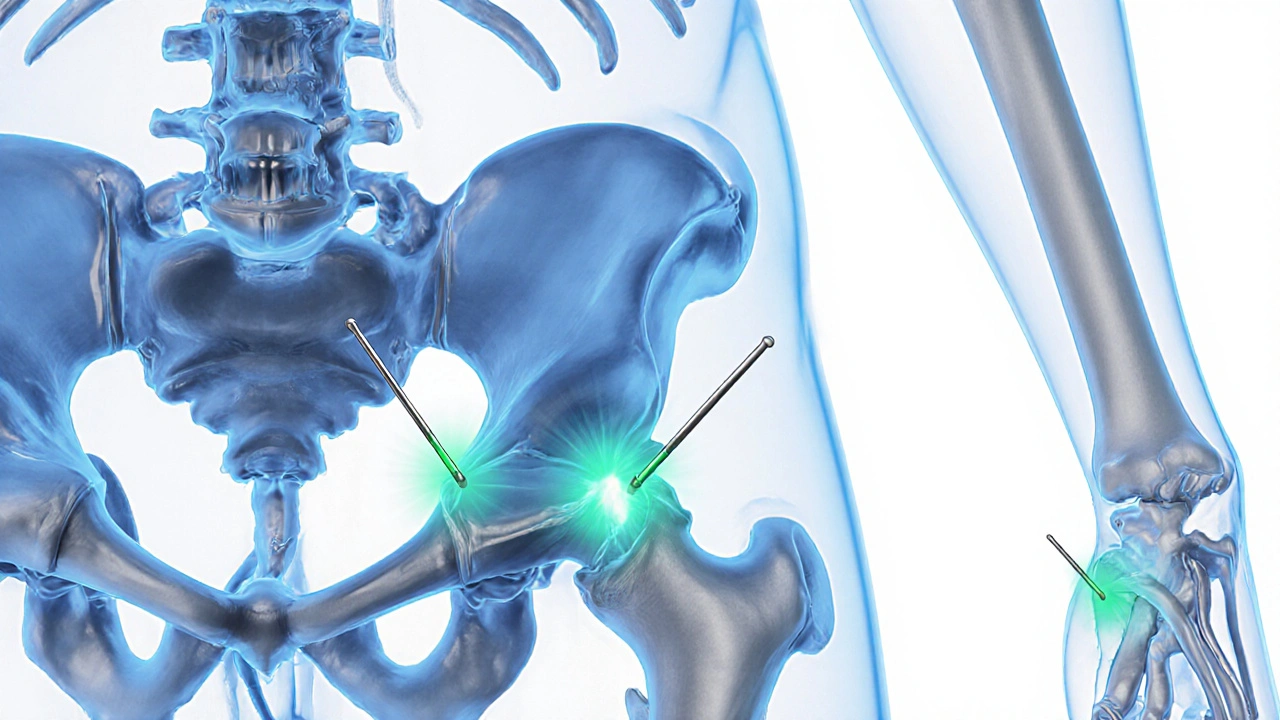
Practical Benefits for Men with BPH
- Symptom relief: Reduced urgency, frequency, and nocturia.
- Improved urine flow: Higher Qmax scores mean a stronger stream.
- Medication reduction: Some men can lower dosages of alpha‑blockers or 5‑alpha‑reductase inhibitors.
- Better quality of life: Fewer bathroom trips translate to better sleep and less anxiety about public restrooms.
- Minimal side‑effects: When performed by a certified practitioner, bleeding or bruising is rare.
Getting Started with Acupuncture for BPH
- Find a qualified practitioner: Look for a licensed acupuncturist with experience in urological conditions. In the UK, the British Acupuncture Council (BAcC) maintains a register.
- Consult your urologist: Share your plan, especially if you’re on prescription meds. The doctor can monitor PSA levels and prostate size during treatment.
- Initial assessment: The acupuncturist will assess your tongue, pulse, and overall health to tailor point selection.
- Treatment schedule: Most protocols recommend 1‑2 sessions per week for 8‑12 weeks. Each session lasts 30‑45 minutes.
- Track progress: Keep a symptom diary (frequency, urgency, flow strength). Re‑evaluate with a urologist after the first month.
Safety, Contraindications, and Common Concerns
Acupuncture is generally safe, but keep these points in mind:
- Bleeding disorders: If you take blood thinners, discuss needle depth with your practitioner.
- Prostate infection: Active prostatitis should be treated first; acupuncture can be added once the infection resolves.
- Pregnancy: Not relevant for BPH, but practitioners avoid certain points in pregnant patients.
- Side‑effects: Mild soreness or faintness in the treated area may occur, usually subsiding within a day.

Acupuncture vs. Medication vs. Surgery
| Aspect | Acupuncture | Medication (e.g., alpha‑blockers) | Surgery (TURP) |
|---|---|---|---|
| Invasiveness | Low - needle insertion only | Oral intake, systemic effects | High - anesthesia and tissue removal |
| Typical Cost (UK) | £40‑£70 per session | £15‑£30 per month | £3,000‑£5,000 (procedure) |
| Effect on Prostate Size | Modest reduction (5‑10% in studies) | Variable; 5‑alpha‑reductase can shrink 20‑30% | Immediate removal of obstructive tissue |
| Side‑effects | Rare bruising, mild soreness | Dizziness, sexual dysfunction, blood pressure changes | Bleeding, infection, retrograde ejaculation |
| Recovery Time | None - resume daily activities immediately | None | 1‑2 weeks for basic recovery |
When to Seek Professional Medical Advice
If you notice any of the following, call your GP or urologist right away:
- Sudden inability to urinate (acute retention).
- Blood in urine or semen.
- Painful urination that worsens.
- Rapidly rising PSA levels.
Acupuncture can complement conventional care, but it isn’t a replacement for urgent medical intervention.
Next Steps
Start by scheduling a consultation with a certified acupuncturist and discussing the plan with your doctor. Keep a symptom log, set realistic expectations (gradual improvement over weeks), and reassess after the initial 8‑week course. If results are promising, you may continue with maintenance sessions or combine acupuncture with lower doses of medication.
Frequently Asked Questions
Can acupuncture shrink the prostate?
Clinical trials report a modest reduction in prostate volume-typically 5‑10%-when acupuncture is performed regularly for 8‑12 weeks. The change is far less than surgical removal but can be enough to ease urinary symptoms.
How many sessions do I need?
Most protocols suggest 1‑2 sessions per week for a total of 8‑12 weeks. Some men continue with monthly maintenance after symptom improvement.
Is acupuncture safe if I’m on BPH medication?
Generally yes. Acupuncture does not interact with common BPH drugs like tamsulosin or finasteride. However, always inform both your urologist and acupuncturist about any medications you take.
What should I look for in a qualified acupuncturist?
Choose a practitioner registered with the British Acupuncture Council (BAcC) or a recognized equivalent. Verify experience with urological issues and ask about their sterilisation protocols.
Can I combine acupuncture with lifestyle changes?
Absolutely. Regular exercise, a diet low in saturated fat, and limiting caffeine and alcohol can further reduce prostate swelling. Acupuncture works best when part of an overall healthy routine.

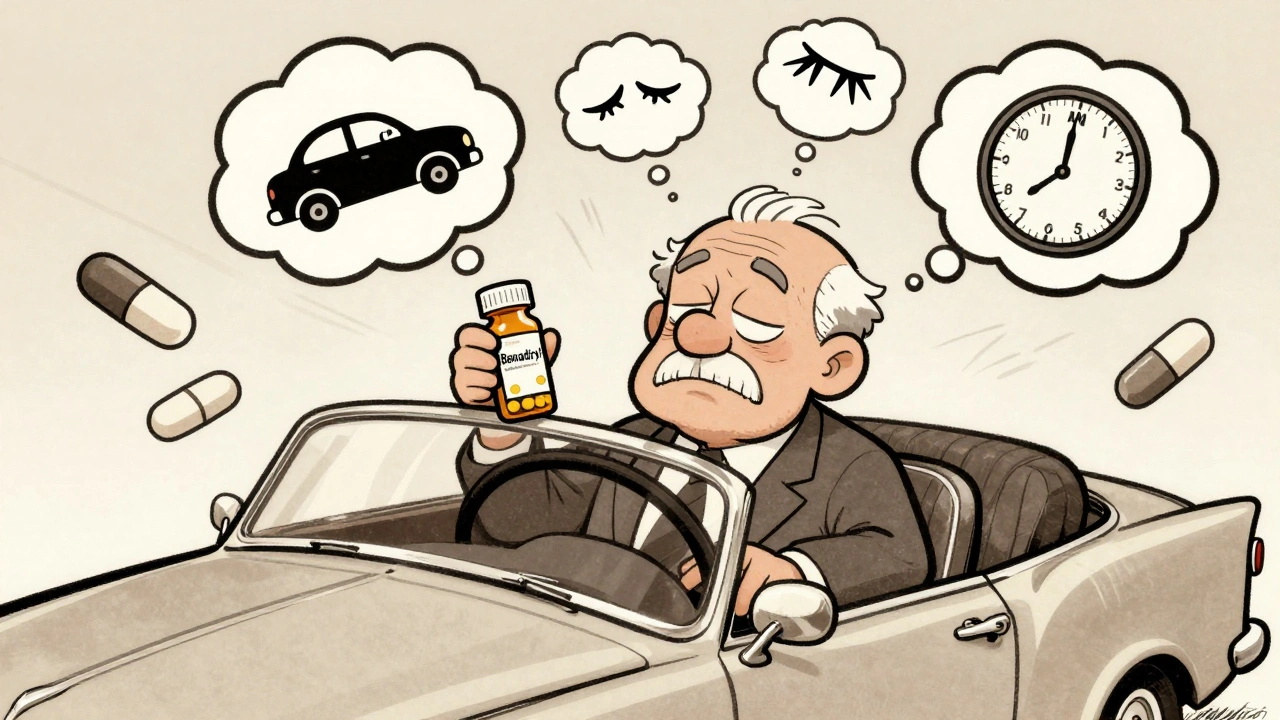
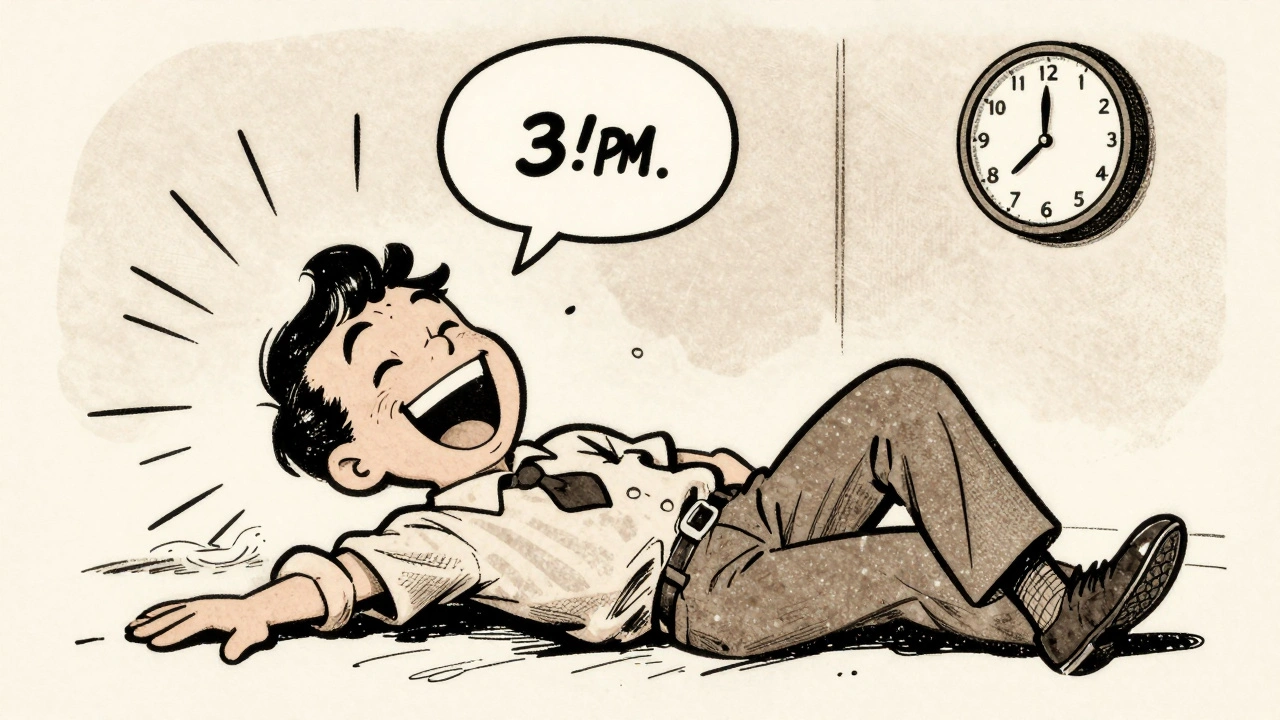

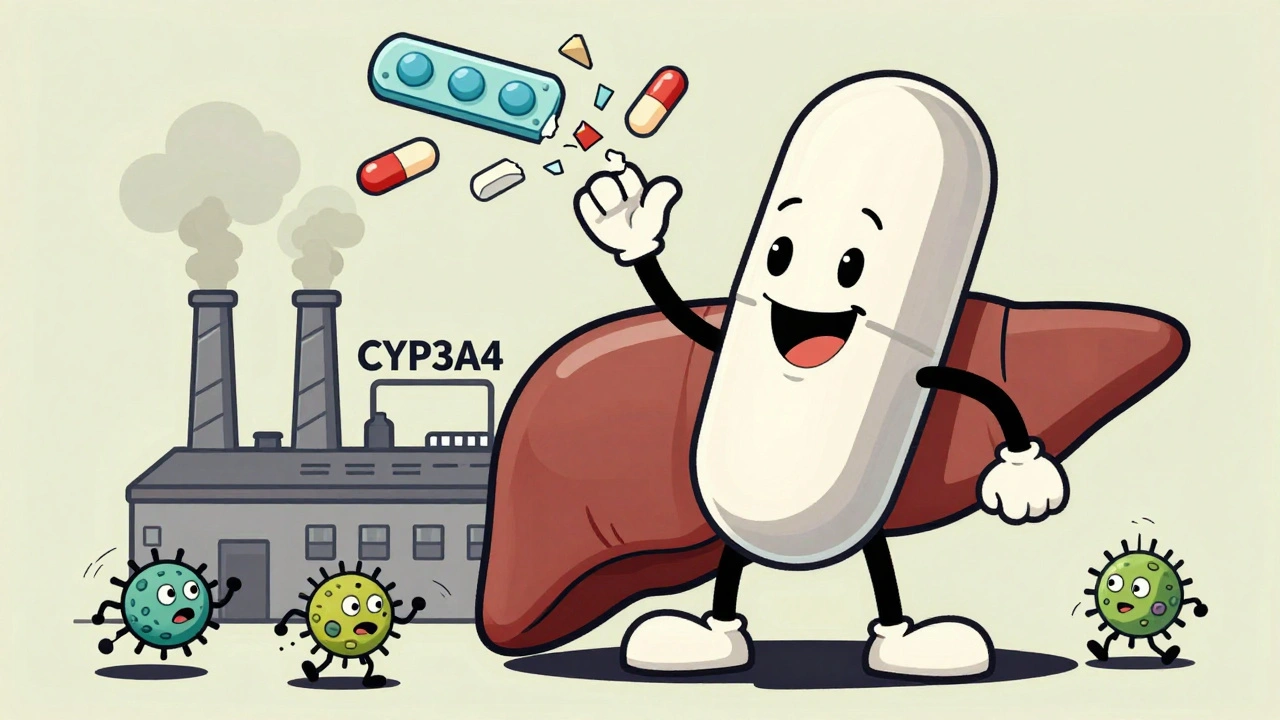
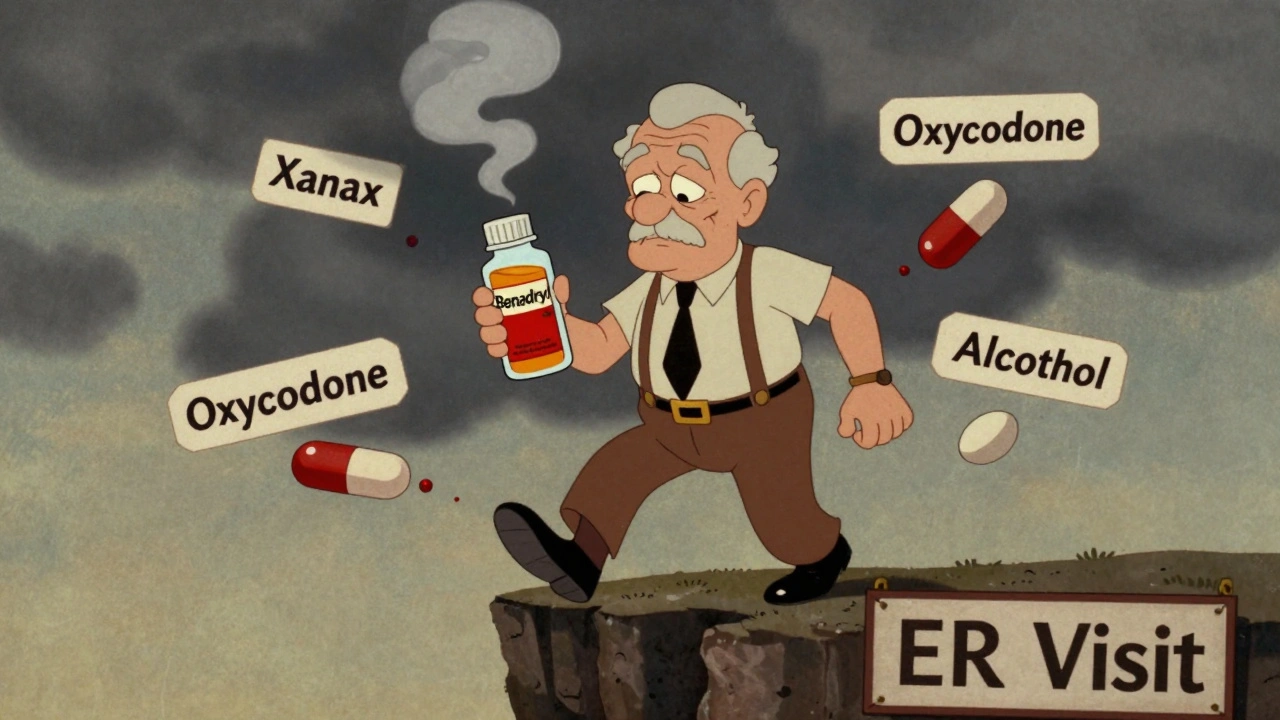
Nick Moore
October 13, 2025 AT 21:16Hey folks, just wanted to throw some good vibes your way about trying acupuncture for BPH. It’s pretty cool how a few needle sessions can actually chill out those pesky night‑time bathroom trips. The low‑risk vibe makes it a nice low‑commitment experiment before jumping to meds. If you’re on the fence, give it a shot for a couple of months and see how your flow feels.
Sriram Musk
October 19, 2025 AT 16:43From a clinical perspective, the data presented in recent trials indicate a modest yet statistically significant reduction in IPSS scores following a structured acupuncture regimen. Specifically, a 30 % improvement versus 12 % in sham controls underscores a genuine therapeutic effect. Moreover, the reported decrease in post‑void residual volume aligns with enhanced bladder emptying. While the effect size is not comparable to TURP, the safety profile is undeniably favorable.
allison hill
October 25, 2025 AT 12:26Let’s not get carried away by the hype; the studies cited are small, sometimes unblinded, and rely on subjective symptom scores that can be easily swayed. The modest shrinkage of prostate volume-5‑10 %-is hardly a game‑changer when you consider the natural variability of prostate measurements. Also, the notion that needles can magically balance “Qi” is, at best, a convenient metaphor rather than a scientifically validated mechanism.
Tushar Agarwal
October 26, 2025 AT 15:46True that the sample sizes are tiny, but even a small win can matter for someone dealing with constant bathroom trips. 😊 It’s also worth noting that the low‑risk nature of acupuncture means the downside is minimal, so trying it as a complementary approach isn’t a huge gamble.
Richard Leonhardt
November 1, 2025 AT 11:30Honestly, i think it’s a solid add‑on if you’re already on alpha‑blockers. The extra boost in flow can let you drop the dose a bit, which i’ve heard helps with those annoying side‑effects. Just make sure your acupuncturist is legit-look for BAcC registration. It’s not a miracle cure, but it’s a nice tool in the toolbox.
Shaun Brown
November 7, 2025 AT 06:56While the enthusiasm for needle‑based therapies is understandable, we must critically examine the methodological rigor of the cited investigations. First, many of the trials suffered from inadequate blinding, which opens the door to placebo‑driven improvements in subjective symptom scores. Second, the heterogeneity in acupuncture point selection and treatment duration makes it difficult to standardize outcomes across studies. Third, the statistical significance reported often hinges on small effect sizes that may not translate into clinically meaningful benefits for the average patient. Fourth, the cost analysis, though superficially appealing, neglects the cumulative expense of weekly sessions over several months, which can rival or exceed that of long‑term pharmaceutical therapy. Fifth, the biological plausibility remains tenuous; while endorphin release and improved microcirculation are plausible, direct evidence linking these mechanisms to reduced prostatic volume is scarce. Sixth, the meta‑analysis aggregates data from trials with varying quality, potentially inflating the perceived efficacy through a “garbage‑in, garbage‑out” effect. Seventh, the safety profile, while generally favorable, is not entirely devoid of risk-instances of fainting, infection, or inadvertent organ injury, though rare, have been documented. Eighth, patient selection criteria are often lax, with many studies including men with mild LUTS who might have improved regardless of intervention. Ninth, the reliance on the International Prostate Symptom Score, a self‑reported metric, introduces bias that objective urodynamic measurements could mitigate. Tenth, the long‑term durability of acupuncture benefits remains unproven; most follow‑up periods cease after the treatment window, leaving a gap in knowledge about relapse rates. Finally, the broader context of BPH management-ranging from lifestyle modifications to pharmacotherapy-should be weighed against a single complementary modality before allocating scarce healthcare resources to it. In summary, acupuncture may offer a modest adjunct, but the current evidence base does not justify widespread endorsement without further high‑quality, blinded, randomized trials.
Damon Dewey
November 7, 2025 AT 08:20Bottom line: modest gains, big hype.
Dan Barreto da Silva
November 13, 2025 AT 03:46Yo, you guys think a couple of tiny needles can fix a swollen prostate? That’s straight up wild! I’ve heard stories of men losing their mind over “miracle” cures, only to end up with nothing but a sore back. If you’re desperate, fine, but don’t sell it like it’s the next big thing in urology.
Suman Wagle
November 14, 2025 AT 08:23Oh, come on, the drama is half the fun! In all seriousness, if you’re already seeing urologists, throwing in a low‑risk option can only add a layer of hope-just keep those expectations realistic.
Neil Sheppeck
November 20, 2025 AT 04:06It’s great to see so many perspectives hopping into the conversation. For anyone on the fence, consider mapping out a simple plan: start with a reputable acupuncturist, log your bathroom trips, and keep your urologist in the loop. That way you get objective data and can gauge whether the needles are actually making a dent in those nocturnal trips. And remember, lifestyle tweaks-like cutting caffeine and staying hydrated-can amplify any benefit you might get from the sessions.
Stephanie S
November 20, 2025 AT 05:30Indeed; the collaborative approach you mention is exemplary; keeping both the practitioner and the patient informed creates a feedback loop that enhances outcomes; kudos for highlighting this!
Bradley Fenton
November 21, 2025 AT 07:20Give it a try, nothing to lose.
Wayne Corlis
November 27, 2025 AT 03:03Ah, the eternal quest for a painless fix to an age‑old problem-one might argue that humanity’s obsession with “quick fixes” mirrors our deeper desire to outrun time itself. While some cling to ancient needles as a testament to holistic wisdom, others dismiss them as quackery, citing the rigor of evidence‑based medicine. Yet, perhaps the truth lies somewhere in the interstice, where patient belief meets physiological response, creating a placebo‑enhanced reality that, paradoxically, does improve quality of life. If we strip away the mystique, what remains is a simple fact: any intervention that marginally eases nocturnal awakenings can be cherished by a weary sleeper. So, before we castigate or glorify, let’s acknowledge that the human body is a complex tapestry, and sometimes a single thread of intervention, no matter how modest, can alter the overall pattern.
Kartikeya Prasad
November 27, 2025 AT 04:43Spot on, philosopher! 🎭 The nuance you capture is exactly why some folks swear by the needle dance-it's the blend of mind‑body chemistry that makes the magic happen. Plus, a dash of sarcasm keeps the convo spicy! 🌶️
HARI PRASATH PRASATH
December 3, 2025 AT 00:26Honestly, the whole acupuncture hype is just a modern reinterpretation of ancient mysticisms and it lacks any scrutininble data-if you even look beyond the surface, you’ll see the gaps. The way some practitioners cherry‑pick studies is, frankly, a bit of intellectual laziness, and the field needs more robust, double‑blind research. Still, i guess some men do report feeling better, so maybe there’s something to it, albeit not the panacea some claim.
Andrew Miller
December 3, 2025 AT 01:50Sounds like wishful thinking.
Brent Herr
December 8, 2025 AT 21:33We should not be glorifying unproven treatments when proven medications exist; it’s irresponsible to sway vulnerable men with anecdotal success stories that lack rigorous validation.
Jill Brock
December 8, 2025 AT 23:13Oh, the horror! Imagine a world where men chase needles like they’re the holy grail, neglecting real medicine-what a nightmare for responsible healthcare! This is exactly why we need to call out such flimsy hype before it spreads like wildfire.
Rohinii Pradhan
December 14, 2025 AT 18:56Allow me to elucidate: the comparative efficacy of acupuncture versus α‑blockers is quantitatively inferior, as demonstrated by a meta‑analysis with a pooled effect size of 0.35 (95 % CI 0.10–0.60). Moreover, the heterogeneity (I² = 68 %) underscores methodological inconsistency across trials, rendering any blanket endorsement scientifically untenable.
Anna-Lisa Hagley
December 14, 2025 AT 20:20In the grand tapestry of medical interventions, acupuncture occupies a niche that reflects humanity’s eternal yearning for control over the unseen; yet, without solid empirical anchors, it remains a philosophical footnote rather than a cornerstone of urological care.